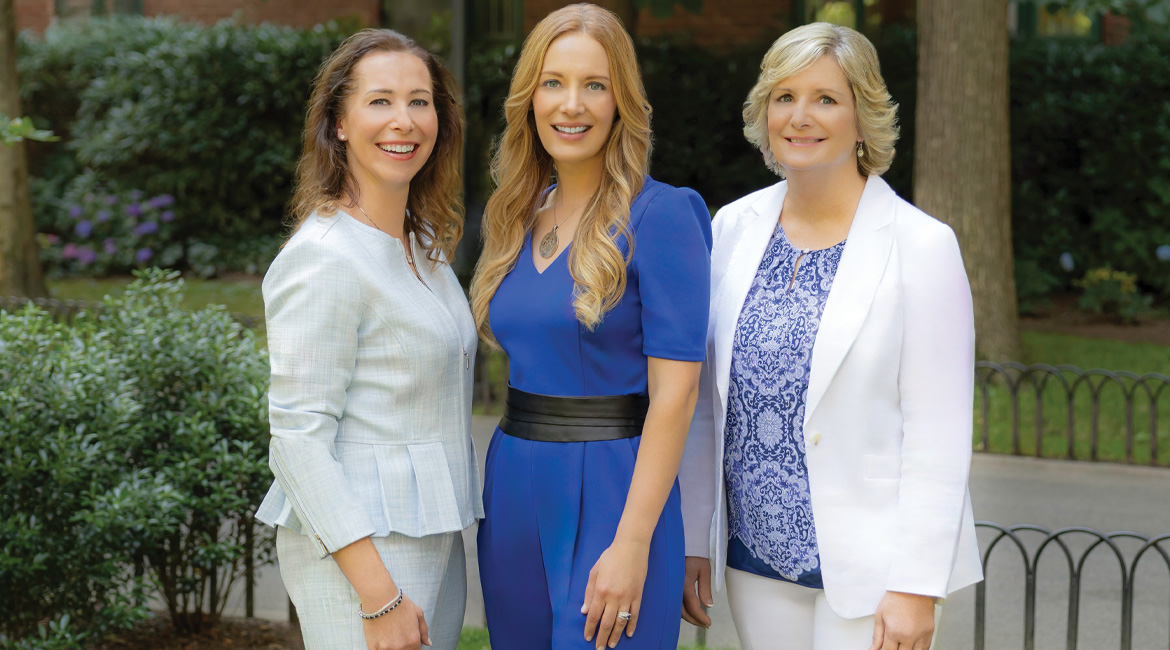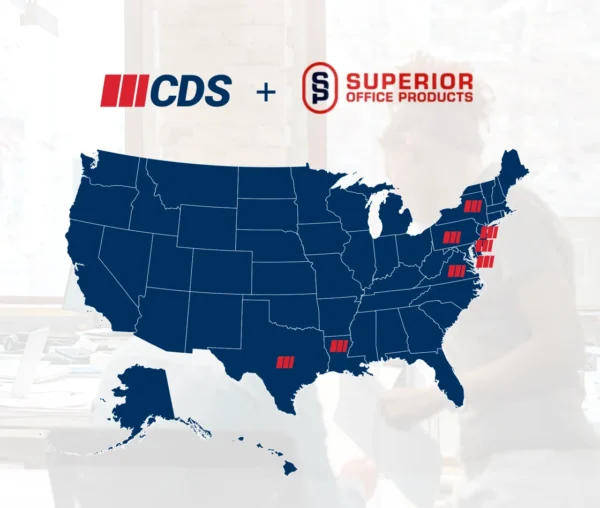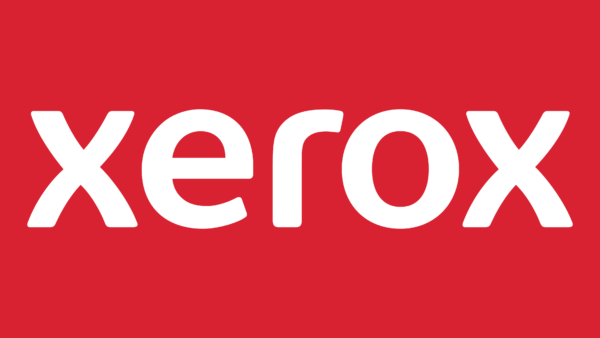Led by curiosity, their inner compass is leading them in their careers and inspiring others.
Above: Kerstin Woods, Sarah Custer, and Charlene Fischer.
When I asked CJ about why this year’s Women Influencers were chosen, he had a clear, concise response: “They are some of the most authentic people I know in the industry.” To navigate their careers, Distribution Management’s Sarah Custer, Xerox’s Charlene Fischer, and Toshiba America Business Solution’s Kerstin Woods rely on their own inner compass to lead them in their careers and inspire others to do the same.
While these three women have pursued different areas of expertise within the office technology industry, they recognize the importance and value of bringing their unique ideas and approaches to their individual roles for the benefit of their teams and companies. Author and researcher Brené Brown defines authenticity as “the process of accepting ourselves for who we really are and abandoning the idea of who we think we’re supposed to be.”
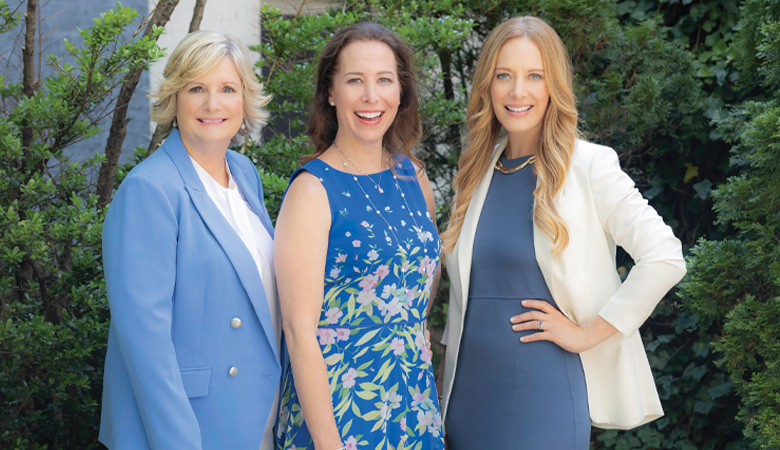
For Woods, showing up authentically as herself has been an evolution over the course of her career. Raised as an only child, her parents empowered her to follow her passions and instilled the belief that women can pursue any professional avenue with hard work and dedication. Having studied mechanical engineering at Stanford University, she was used to being the only woman in the room. Yet, early in her career, despite her strong academic foundation and self-confidence, she tried to blend in with the men in the room. She hid her pregnancies until she couldn’t, all for the sake of maintaining her seat at the decision-making table.
“I always wanted to have a seat at the table based on merit, and I was terrified I would have a seat at the table because I was a woman,” said Woods. I struggle with calling out success as a woman because it’s so core to me to be successful as a person.”
Her shift to Toshiba America Business Solutions proved to be an inflection point for Woods. As she took note of her mentors and other leaders who were showing up as their unique selves, not trying to emulate others, Woods wanted to arrive in her new role as herself, believing that a happier, more authentic person develops deeper relationships and becomes a better leader.
“When there is that alignment of who you are and how you act, that builds trust in a way that can’t happen when you have a mask on,” said Woods. “To me, that trust that comes with authenticity is really key to leadership. Anyone can dictate and lead, but not everyone can inspire. If I’m not showing you who I am, then why would you trust me, and how can I really inspire you to action?”
Looking back at her four decades at Xerox, Fischer similarly recalled believing she had to represent herself in a different form or fashion at different times in her career. As she negotiated not only a changing industry but also a changing world for women in the workplace over these years, she learned by experience that her authenticity has true value and has propelled her success.
“I learned rather quickly that if you can’t be yourself, you’re not going to be fulfilled in your career,” said Fischer, who was aiming to be an elementary school teacher when she graduated from college but landed at Xerox by chance. “I found early on that it was exhausting to be someone I wasn’t.”
Fischer said it’s important for her to work for a company that aligns with her nurturing nature. She has felt nurtured and supported at Xerox, especially as the company found ways to allow her to move from California to Texas, Missouri, and Florida and continue to grow her own career.
Fischer prioritizes the best interests of her team and Xerox, which drives her decision-making and helps her come to conclusions that are beneficial for everyone. “If you remember who you are, you can portray that you have people’s best interest at heart, which is very beneficial even in tough conversations.”
Custer, who built her career at Distribution Management, where her father was a senior executive, has always felt comfortable defying expectations. From tossing heavy hay bales at horse stables to graduating college while working full-time at Distribution Management, she developed a strong sense of self in her earliest years.
“I only know how to be me,” said Custer. “I found out early on that people may look at me and not envision me in a role where I think I could be of use. In our industry, I may not look like what other vice presidents of sales operations look like.”
Custer quickly became accustomed to being the only woman in the room and looked to carve her own path without modeling herself after others. As a leader at Distribution Management, she is sensitive to other people who may have had a similar experience of not looking the part in an industry that has historically been led by men. She is constantly looking for people’s key strengths, the skills they possess, and how she can help them to use their talents in their roles.
“In order to thrive, I have to do it my way,” said Custer. “And sometimes, I know that my way is not the cup of tea of others, or it may not be how others have approached it in the past. I’m OK with that.”
Sarah Custer, vice president of sales operations, Distribution Management

If there’s one thread throughout Sarah Custer’s career, it’s curiosity. From an early age, Custer learned to follow her interests, allowing her to carve her own path at Distribution Management, where she is currently vice president of sales operations.
Growing up, Custer’s father, Barney Kister, currently Distribution Management’s senior vice president of strategic relations, often brought her into the office on weekends so her mom, who worked the overnight shift as a labor and delivery nurse, could rest. Custer recalls knowing all the best desks to sit in, where the candy stashes were, and which were the nicest pens and paper. Custer recalls her dad giving her odd jobs, handing her old blue bar reports, and asking her to add up all the columns. With great enthusiasm, Custer remembers grabbing her dad’s big calculator and setting to work. These innocent early days proved to be the seeds of Custer’s career in the office technology industry.
In high school, Custer raised her hand to take a temporary position cleaning up the company’s database of phone numbers. She loved sitting among the other employees, hearing them talk about products and services, and watching them problem solve in real time. By the time it came to college, rather than matriculating full-time, she pitched her dad to work at Distribution Management, which was then known as Supplies Network, as a sales assistant and go to classes at night, with the contingency set by her father that if she ever quit college, she’d also have to find a new job.
“I learned a lot from all the people by sitting in cubicles and hearing how other people were asking other customers questions or approaching a problem,” said Custer. “I learned by observing others, jumping in, and doing whatever job was available.”
Custer certainly did graduate, and in the meantime, she pushed for her own accounts and worked her way up the company sales chain to sales representative and then to account manager. All the while, Kister and Custer had firm boundaries at work and home. At work, Kister was Barney; at home, he was Dad. But no matter where Custer was, she says Kister made her feel capable and gave her opportunities to prove she could rise up to any challenge presented to her, whether it was throwing a heavy hay bale up at the barn to win a friendly bet when she was a child or winning sales accounts in the office as an adult in the office.
A turning point came in 2006 when managed print began gaining attention and traction in the industry. While Custer loved what she was doing—talking to customers, helping them with operational issues, and making things flow through automation—she quickly realized the deep potential of incorporating managed print to solve more pain points and problems up and down the channel, from end users to dealers, to manufacturers. Custer could envision many of the industry’s complexities coming together to form a streamlined program.
Intrigued by the prospect of managed print, Custer dove headfirst into understanding every aspect of it and its sales process.
“The sales aspect of it was so exciting because it is truly a solution-based sale, not simply the best price you can give me on this toner cartridge today,” said Custer. “It was really about solving a problem and just digging in. I just gravitated toward that.”
In 2008, Custer became the company’s first salesperson for the managed print program. Part of that role entailed envisioning what the managed print program would look like for Distribution Management, deciding what it would include, and building what it would sell. While she knew what the ideal program would include, it took a lot of work to reach that point.
“I had the opportunity to work with so many other departments, especially our development teams, and understand programming,” said Custer. “And then, I worked with our software vendors and partners for integration. Being curious was really helpful because there was a lot of work behind the scenes to figure out what would work for us. I think managed print came in at just the right time to show me what is possible in our business.”
As Custer mastered the complexities of managed print, she and the executive team at Distribution Management learned quickly they could not burden their day-to-day reps with selling this new offering on top of the existing line-up of products and services. Without any hesitation, Custer tread into uncharted territory as the first managed print salesperson.
By 2012, Custer had built out the company’s managed print program to justify a team of salespeople, which allowed her to move into more of a management role. The program was still a work in progress, allowing Custer to work with leadership inside and outside the company to continue developing the offering.
“Being able to navigate the complexities of getting something done in businesses that are so big and so siloed gave me such an appreciation for our team here and how nimble we can be. Even though we’re growing into a bigger company, we can still keep that small business feel where we can adjust. It’s crazy the integrations we do. We really are doing backflips to align with what the dealers and manufacturers need. We’re really the middleman that has to make it work for everybody.”
As this side of the business grew, so did Custer’s role and experience. From the sales side, she moved into the executive seat, shifting some of her focus to the company’s operational teams, including the break/fix service team, software support, fulfillment, and contracts.
“It became almost a business within a business, that we had to make all these roles work inside the program, understanding how they worked together and within our organization,” said Custer.
Today, Custer oversees Distribution Management’s sales support, customer care, and pricing teams, as well as managed print sales, day-to-day sales operations for hardware, which the company added in 2014, and other products, including toner and other supplies.
Looking ahead, Custer is positioning Distribution Management as a key partner in facing the industry’s challenges.
“Driving operational efficiencies has been a main point for many years, and it’s becoming even more crucial,” said Custer. “We’re all dealing with rising costs in many areas of our businesses. The things we’re hearing from dealers right now are all the same as you’d expect and listening to the news—increases in labor costs, increasing interest rates, rising warehousing costs, materials like corrugated, packaging, the leasing of space for warehousing, inventory costs, and of course, freight, especially since the pandemic.”
These are just some of the pain points that Custer calls out and ones that she has spent her career at Distribution Management partnering with dealers and manufacturers to try to alleviate.
“Because we’re a distributor carrying all the major brands, we can really help with all that inventory management, drop shipping, aggregating shipments,” said Custer. “To add a second supply item to a shipment, there’s very little additional cost versus sending two cartridges separately.” Custer offered the example of a dealer shipping A4 from a distributor, but their traditional A3 manufacturer has required them to stock those cartridges, so now this dealer has to pay to ship one cartridge from their A4 distributor and another from their own warehouse—all to the same customer. This transaction requires two separate order entries, two separate warehouses, and two separate freight costs, and the costs add up.
Custer says more dealers are asking their manufacturers to use Distribution Management to distribute their A4 and A3 supplies to avoid compounding costs. The company continues to add new products to ease the dealer and manufacturer experience, drive down costs, and increase efficiencies so everyone wins. Distribution Management currently works with 70 unique brands, all distinctly focused on print, and the company is constantly expanding the breadth of its offerings with each of its manufacturers.
For example, in April, Distribution Management announced its expanded relationship with Xerox, which has offered its A3 and A4 supplies through the company for many years, including Xerox’s A3 VersaLink and AltaLink printers. This rollout was months in the making, sorting through numerous operational processes and ensuring a smooth transition.
“We’re helping to connect the dots between Xerox and the dealers,” says Custer. “The dealers are happier, which makes Xerox happier. We’re taking a lot of operational load so both our dealers and Xerox can focus more on selling and services rather than the operational getting things to and from, the ease of placing an order, seeing inventory, tracking shipments—all the kind of things that should be natural and dealers shouldn’t have to worry about. It’s a lot to do behind the scenes, but we believe it should be easy for everyone. We’re excited to play that role and hopefully make the whole process smoother and easier,” says Custer.
These types of opportunities keep Custer excited to be in this industry. She remains inspired by the “sheer grit and adaptability” of the dealers. “Dealers have a strong history of getting in there and figuring things out. I love working with people like that and I see so many opportunities to partner with different organizations, supporting the channel from each of their different perspectives. It’s not just about toner and printers, it’s all the solutions and experiences around it.”
Since Custer started her career at Distribution Management, the industry has evolved, the products and services have shifted, and the dealers themselves have repeatedly rebranded themselves to figure out what their customers need and how to support that.
No matter what the challenge, Custer advises young people who are looking to make a career in the industry to dive right in, understand, and try to make a difference in the role they may be in. “Fix those problems and provide solutions in your area,” said Custer. “Don’t be afraid of hard work. Be gritty and adaptable and push forward. If you can succeed in your area, there will be more opportunities to grow beyond that. You’ve got to show up where you are.”
Leading with Connection
Charlene Fischer, vice president, U.S. channel sales, Eastern region, Xerox

Even though Charlene Fischer wasn’t planning on making a career at Xerox when she walked into the mailroom right out of college, she found the potential opportunities of working at a large company captivating. After what began as a three-day temporary stint, Fisher has now spent over four decades working in various roles and capacities and today serves as vice president of U.S. sales in the company’s Eastern region.
“Let me tell you some advice that was given to me [at Xerox],” said Fischer, who gives this same counsel to younger employees at Xerox. “You can have multiple careers within the same corporation. There are all kinds of things you can do—sales, service, engineering, marketing—all while working for the same company. That’s one of the values of working for a manufacturer or a large corporation like Xerox.”
Like many young people starting in this industry, Fischer took that temporary mailroom gig to stay afloat while pursuing another career. For Fischer, she had a job as a substitute teacher but was hoping to secure a full-time role leading a 2nd grade elementary school classroom. To the credit of that mailroom manager, who recognized Fischer’s value and talent, she encouraged Fischer to take some time to explore different departments at Xerox that may resonate more than the mailroom. In March of 1984, Fischer signed a letter of commitment to Xerox, officially beginning her career on a sales path.
“I’ve done pretty much everything in sales and sales management at Xerox, from the 1980s when we were selling copiers and I had to knock on doors and make 20 cold calls a day, all the way to managing and leading a very large sales organization, to now, where I have a smaller team but focused on a variety of different types of partners,” said Fischer, whose current team works with mono-branded agents, traditional dealers, and IT resellers.
Fischer oversees Xerox’s eastern region for sales, reaching from Texas to Virginia and up the eastern coast to Maine. Her team is comprised of 14 channel partner managers who are in the field four days a week. She tasks each of these channel partner managers with figuring out how Xerox can gain wallet share and mind share with the reps and how Xerox can fit into the ever-changing marketplace of how that particular partner wants to grow.
“Part of that is that I am out in the field with them,” said Fischer, who travels roughly half the month. “I don’t necessarily carry a bag, but as a Ieader, I believe it’s really important that I walk in my shoes next to them. At one time in my career, I had that role for about seven or eight years. It’s changed some, so I always want to understand myself how it’s changed, what they’re seeing, and what they’re hearing from the dealers themselves to understand what’s important.”
Fischer’s breadth of experience, combined with her continued commitment to her customers, gives her a sharp eye on the challenges and keys to success as the industry looks to move confidently into the future.
“We all know print is declining; marks on paper are declining,” said Fischer. “It kind of gets me when people say it’s a declining industry or market. It’s not a declining market, in my opinion. What’s declining is marks on paper, but when you think about what’s increasing, is the information, how you manage the information, and how you utilize this information to grow your business. So, when I look at traditional dealers—and this is the same challenge at Xerox as we reinvent ourselves—one of our biggest challenges is addressing how we keep our traditional business of prints on paper a healthy business for us, meaning we can make money on it, while we find the places to invest and grow.”
When Fischer tunes her ear to the dealer channel, she hears about several opportunities for dealers to consider as they expand beyond their print businesses. “It’s about understanding dealer by dealer how they want to grow their business,” said Fischer. “We’re asking, how do you want to grow? There is no one way to grow.”
For some dealers, it may be with IT services. For others, it may be robotic process automation and using AI technology to facilitate workflows, which includes not only getting a document where it needs to be but also reading it to begin a process.
One way Xerox is helping dealers tap into AI functionality is with its augmented-reality-based app, CareAR. CareAR allows remote technicians to problem-solve customer issues. For example, if a dealer’s customer has an issue with their printer or MFP, the customer can show the tech exactly what is happening rather than explaining the problem using their phones or tablets. CareAR features a suite of AR tools that help the tech live stream and guide the customer through troubleshooting or even provide an initial diagnostic.
“It’s thinking outside the box for solutions like that, but it’s still around information and what we’re doing with that information,” said Fischer, who says CareAR has gained traction among dealers who are offering it to their valued clients.
Production print is another avenue that Fischer believes could hold great potential for certain dealers. She recently worked with a dealer in Florida looking to expand beyond traditional print to explore this opportunity. This high-margin area is highly specialized and has more capabilities than ever, including the ability to perform short runs of customized print that can inlay silver and gold into packaging and deliver customized print with various colors and substrates.
Xerox is working hand-in-hand with this particular dealer by investing in putting this production print technology into their showroom, providing education to train one of the dealer’s employees to be a production print specialist, delivering specialized marketing about the technology, and offering showroom packages on how to display the equipment effectively.
Fischer’s strong relationships in the field and inside Xerox have propelled her successful career. She hosts a bi-monthly “Happiness Hour,” where people on her tenured team meet virtually to share a positive story and learn from each other. She connects people across her team to educate each other, solve problems, and brainstorm solutions, encouraging them to work together to strengthen their team bonds.
“From a leadership standpoint, I don’t have all the answers, I very rarely come to a meeting and say, this is what we’re going to do,” said Fischer. “I’ve been told by many people that I have the patience of Job, but if you want to get to a solution where everyone buys in, you have to accept the chaos and muddiness that gets you there.”
Fischer is also a proponent of forming deep relationships across Xerox. Her commitment to developing the next generation of industry leaders has been well recognized, especially for women. She is involved in the company’s The Women’s Alliance, formed four decades ago for women within the company to share ideas and support each other’s career growth. The Women’s Alliance is one of 10 different employee-led resource groups, each of which encourages and supports diversity and inclusion.
“My role as a manager is not to just manage the people I have today and deliver the day-to-day results, and it’s not just to lead and coach my people, but it really is to find ways to find and develop the next generation,” said Fischer. “I feel a huge responsibility to do that, especially as I get closer to the end of my career than the beginning.”
The Women’s Alliance began in 1984, the same year Fischer joined Xerox, with eight women in the company’s middle management. One of the founding members was Anne Mulcahy, who became the first woman chairman and CEO of the company. Another founding member was Diane McGarry, CEO of Xerox’s Canada organization. The intent of The Women’s Alliance was to create awareness about women across the mostly male executive team and the industry.
“I’ve made connections with women I would have never met otherwise who were more senior in other parts of the business,” said Fischer, who has been a group member since the 1990s.
Fischer is consistently looking to link younger employees with more seasoned veterans within the company to foster relationships, open doors of communication, and develop, nurture, and retain the next generation of leaders at Xerox and across the industry.
“You’re not just selling technology or a solution, you’re sitting down with a business owner having discussions about P&Ls, profit margins, service efficiencies so you can build a career that’s more than just sales,” Fischer advises those looking to succeed at a manufacturer. “When my people walk into a dealership, those dealers don’t need to be sold to about Xerox. They want someone they can sit down with and ask how do I grow my business profitably.”
For those considering a career within a dealership, she views technology as a key selling point for recruiting candidates. She believes AI offers many opportunities beyond marks on paper.
“I think that’s what’s exciting to younger people who want to join our company or a dealership, where I know they have the same challenges recruiting people,” said Fischer. “Young people don’t necessarily want to start a career saying I’m going to go out every day and sell a copier. Maybe you don’t want to sell a copier, but if you join our organization, you’ll be selling a form of artificial intelligence through robotic process automation. Now, the younger generation that the dealer needs to recruit as well says, ‘Hmm, maybe I can build a career here.’”
Fischer is looking forward to whatever is next for Xerox, her own career, and the next generation of leaders. She believes in the power of connection, and she plans to create environments across Xerox and the industry where all can thrive and succeed.
Connecting Technology with Business
Kerstin Woods, vice president, solutions and outbound marketing, Toshiba America Business Solutions
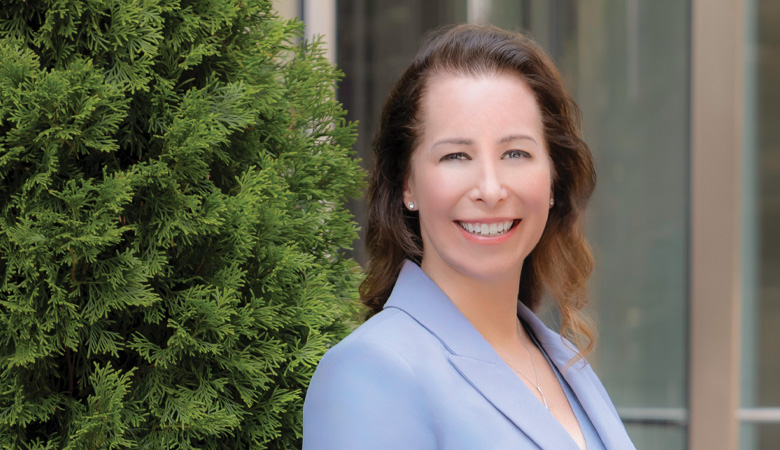
Kerstin Woods, vice president of solutions and outbound marketing at Toshiba America Business Solutions, is a connector. Early in her career, she was a mechanical engineer working on building rockets for Lockheed Martin, and that was when she uncovered a need to bridge the gap between the technical engineering side of production and the business side.
“I found that most engineers couldn’t effectively communicate well with the business leaders about the projects they were working on, and I naturally gravitated toward that role,” said Woods. “I like to be the Google translator, if you will, between complex things that I love simplifying so that whether it’s business leaders or end users, they can really understand the value these things can bring. I always tell my team that there’s no valor in complexity. You want to sound smart, which makes you want to be complex, but that’s not the point. The point is to show value and make sure people understand how you can help solve some of their problems with your products.”
Woods grew up in Colorado as the only child of William Van Dyke, an aerospace engineer, and Linda Van Dyke, a flight attendant. Woods credits her parents for encouraging her to follow her dreams and passions. “I grew up never thinking that women couldn’t do engineering,” said Woods. “My dad treated me as though whether I was a girl or a boy that I could do all the things. We worked on cars together. I never grew up thinking that women didn’t go into the sciences.”
Woods pursued a degree in mechanical engineering at Stanford University. Unphased by being one of the very few women in the classroom, she stayed at Stanford for her joint master’s degree in business and engineering with a focus on engineering management.
Once Woods recognized her value in connecting the complexities of technology with business, she joined a start-up company focused on storage hardware. The company needed more help with marketing, so she jumped in. Since then, she has stayed on the marketing side of tech-related companies in roles including product management, product marketing, partner management, and partner marketing at start-ups and Fortune 500 companies. Across her career, she has also transitioned from hardware to software to the cloud.
“I’ve always really tried to seek out new opportunities as technology is evolving to really stay in touch with where the future of innovation is headed,” said Woods, who was one of the cloud’s biggest proponents before it was cool.
Woods spent about nine years at Oracle focusing on marketing its cloud business when she received a call in early 2019 from a headhunter looking to fill a role at Toshiba. Woods wasn’t actively looking for a new opportunity but decided to speak with Bill Melo, vice president of marketing and strategic development and a Toshiba veteran of over 20 years.
“I had such a great discussion with Bill about all the opportunities to bring new thinking and innovation to the more established print industry,” said Woods. “I loved his thinking, strategy, and direction so much that I left Oracle to join Toshiba.”
When she joined Toshiba in 2019, Woods was immediately struck by the company’s positive working culture from the top down, a big shift from the dog-eat-dog scenarios at her previous workplaces. At Toshiba, she found decision-makers doing the right things for the right reasons and a collaborative working environment that empowered employees.
“There was also a stereotype of coming into a print business as being established, old school, an old boys network, these were some of my concerns,” said Wood. “But I’ve found the industry as a whole has been really open and embracing of new people, especially someone like me coming from outside the industry.”
Woods jumped right into working to understand all the facets of the workplace technology industry and Toshiba’s dealer community. She is a voracious reader and researcher, always looking to understand how technology can work to solve everyday issues.
“One of the big challenges for our dealer community is common with what you’d find in any established industry, and that is how do you bring newness to the business, whether that’s new products, new talent with new perspectives, new customers to brand out of your current base and new revenue streams in order to keep growing and evolving,” she said.
Bringing her deep technical background and shrewd business sense, Woods is proud to be part of Toshiba’s efforts in working with dealers to address each of these areas. Whether helping dealers recruit and retain new talent, helping gain new clients in existing areas of business, helping them provide the best customer experience possible, or helping them branch out into new revenue streams such as cloud, software, and thermal printers—products and services that are great extensions from the core, established parts of dealers’ businesses—Toshiba is looking to be a partner.
“I am passionate about hearing directly from customers, dealers, and our field teams,” said Woods, who now oversees two teams—solutions and outbound marketing. “If, at the end of the day, all I’m doing is corporate activities, then I will be disconnected from the people who mean the most. I view marketing as a service organization to serve the needs of our customers and our field teams, and dealers are core to that.”
Woods’ solutions team mainly focuses on Toshiba’s software business. Most recently, this team successfully rolled out the company’s cloud print product line. Toshiba’s e-BRIDGE Global Print is a one-time download for a desktop or laptop that lets users send documents to the cloud and retrieve them at their command from any Toshiba device with Global Print installed. The pandemic and the widespread adoption of hybrid work accelerated the need to be able to print on any device safely and securely.
Woods and her team are also constantly working with Toshiba’s dealers to develop marketing campaigns to meet the needs of as many dealers as possible. “For example, we recently worked with a dealer who wanted to grow their business through consortiums, so we built an entire campaign with that dealer with specific end-to-end content and support so they could drive new sales,” said Woods.
Woods has firm conviction in her team and their talents. She encourages an integrated marketing approach, emphasizing consistency across every possible touchpoint with Toshiba’s customers. She empowers her team to take ownership of their areas, put their expertise to work, and continue growing and evolving within the company and the industry.
“I really try to give them full authority and autonomy over their space of the business,” said Woods. “I trust them, and they trust me. That’s really important.”
While Woods is very excited about all of the innovation across the industry, from cloud to hardware and everything in between, she feels equally enthusiastic about print. “At the core of this industry, what’s really compelling is that print is still really important,” said Woods. “It’s important to people individually, businesses, people’s productivity, and it’s core to effective communication. We get to sit at this juncture between printed communication and digital, which is exciting because we get to help customers take advantage of the best of both worlds. There are so many neat ways that this physical world and digital world can co-exist now. To me, that’s exciting.”
With a sharp focus on dealers, Woods is very aware of the challenges they are facing on a day-to-day basis. One of the biggest hurdles, from her viewpoint, is simply adapting to changing market conditions, whether it is fewer print volumes, hybrid work, or the opportunities around the cloud; she believes adapting to all of these challenges is critical. Another is keeping up with technological advances such as the rapid shift to the cloud, the integration of artificial intelligence, and the adoption of e-commerce. She also views meeting the changing needs of customers as another important challenge to be addressed. If print is still an important productivity tool, dealers must be able to help customers balance that with other modern pressures they have around sustainability, cost, security—all of which are modern challenges layered on top of the print environment.
“Toshiba is actively working with dealers to address all of these,” said Woods. “For example, keeping up with technological advances, we are actively driving those technological advancements into our products, into our roadmaps, and also enabling and empowering dealers to understand them.”
Woods is also excited to be part of an established industry that is ever-changing. She commented, “If we continue to evolve and face these new challenges head on, there’s really no limit to what is possible as we take print into the future.”
With passion and enthusiasm, Woods has sage advice for those looking to establish themselves in this industry: “Never stop learning. Be open to new ideas and experiences and bring those forth to the industry. The technology and print industries are constantly changing. The key to success is to adapt and change along with it.”
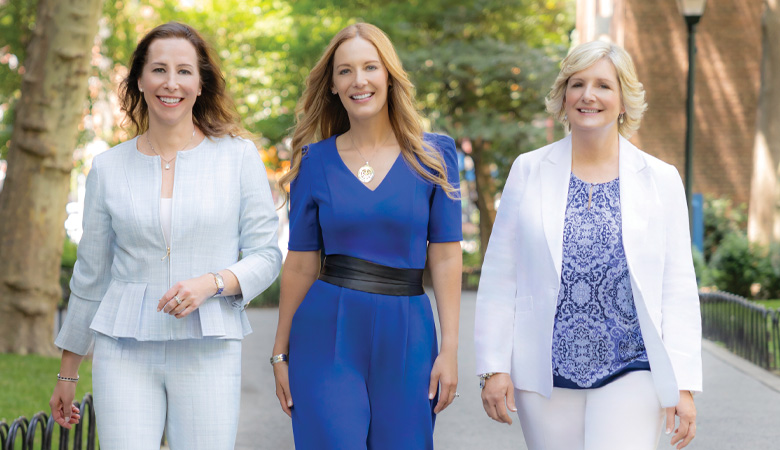
Music Grounds Us
Music is a unifying and inspiring force. I asked our three Women Influencers for songs that bring them back to who they are and remind them to show up authentically in their lives. Here are their responses (condensed for space):
Sarah Custer
“Two Step” by Dave Matthews Band: “The main chorus is, ‘Celebrate we will because life is short but sweet for certain. We climb on two by two to be sure these days continue.’ It just really resonates.”
“Leap of Faith” album by Kenny Loggins: “I have an emotional tie to this album. My parents were going through a divorce when this album came out, and it was written by Kenny Loggins, who was going through his own divorce. It really helped me and my family process all of what was going on.” Her favorite songs are “The Real Thing,” “Conviction of the Heart,” and “Cody’s Song.”
Broadway Musicals: Custer is a musical theater buff. She loves everything from Godspell to Fiddler on the Roof, Joseph and the Amazing Technicolor Dreamcoat, Chicago, Brigadoon, Newsies, and Hamilton to name a few.
Charlene Fischer
“Can’t Stop Me Now” by Rod Stewart: Fischer plays this when she is gearing up to get something done or has encountered a bump in the road and needs to remind herself to keep going.
“Eye of the Tiger” by Katy Perry: “Pumps me up!”
“The Climb” by Miley Cyrus: “There’s always going to be an obstacle.”
“His Eye Is on the Sparrow,” sung by Whitney Houston: Fischer puts this on to remind her of the bigger picture and her faith that if God is watching over the small sparrow, God is watching over her too.
Kerstin Woods
“Rocket Man” by Elton John: “This song always reminds me to reach for my dreams, even if they are 140 million miles away. The song also talks about the struggle between being an astronaut on Mars and having a family back on Earth. I can relate to that. How do you strike that balance of big dreams and career goals and really loving your family?”
“You Say” by Lauren Daigle: “It grounds me in my faith and that who we are is always enough.”
“This Is Me” from The Greatest Showman: “If I’m in the mood that needs a pick-me-up, I play this one. It’s super empowering to be exactly who you are, broken, beat-up, battered, doesn’t matter, all of it is the perfect version of who you are supposed to be.”
“Glory Days” by Gabby Barrett: “This is a reminder to be grateful in this moment and have a positive perspective.”

